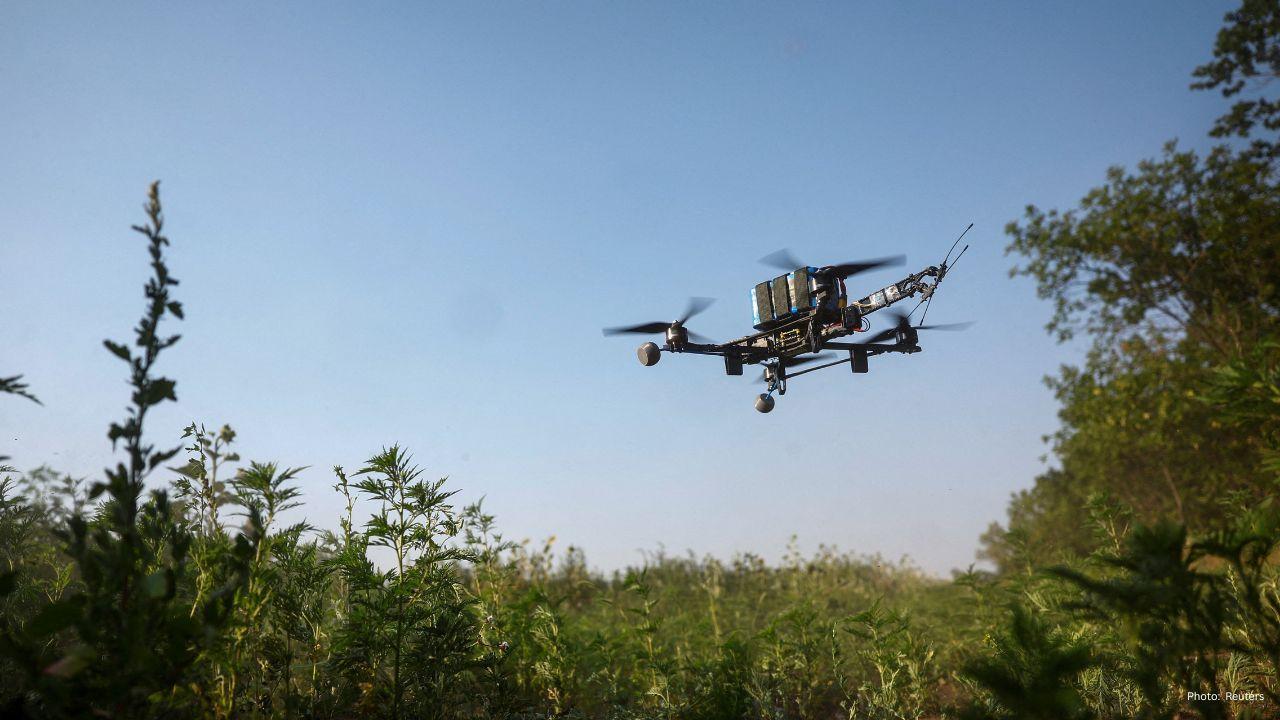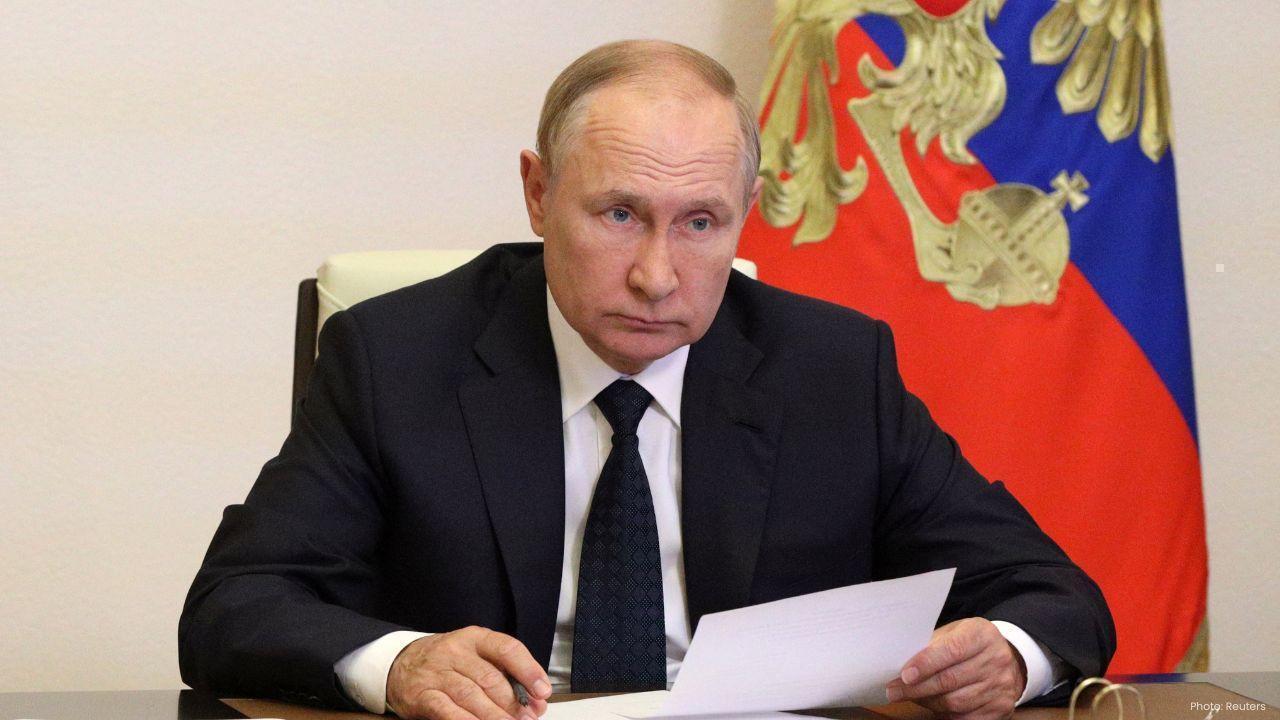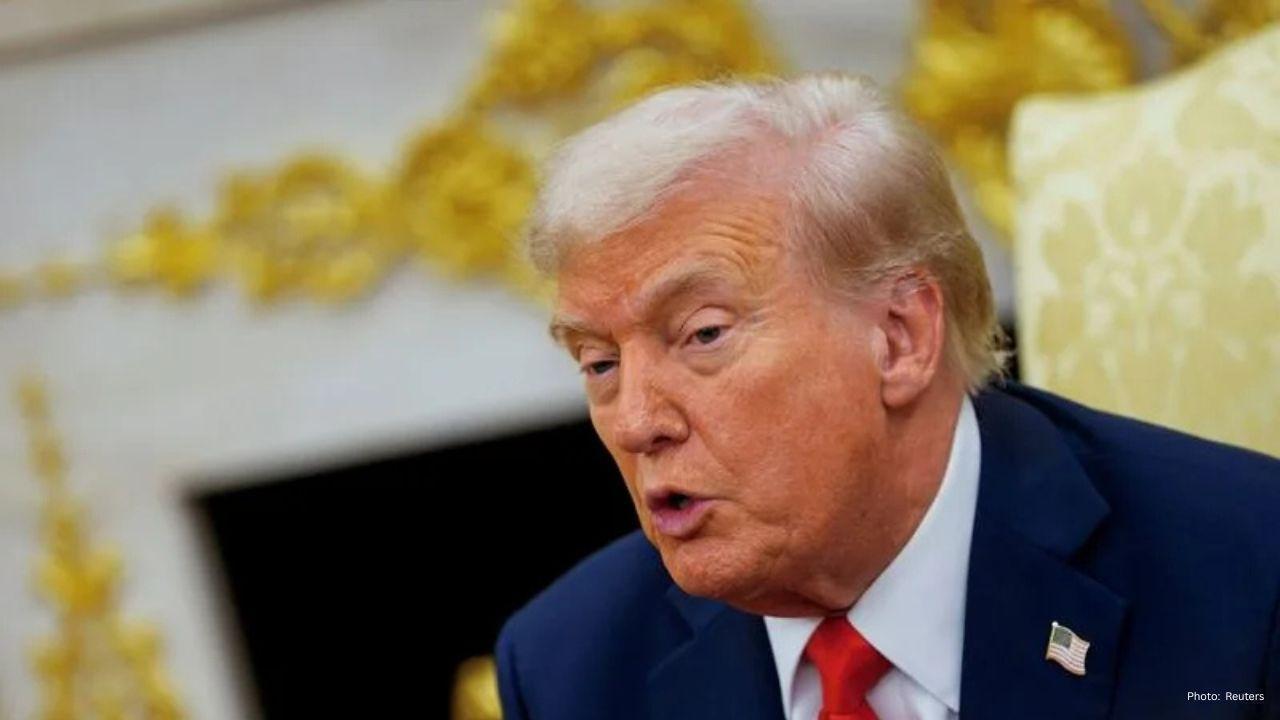
Post by : Saif Ali Khan
Europe’s plan to build a strong “drone wall” to protect its skies from Russian drones is running into serious problems. Political disagreements, technical challenges, and financial questions are slowing down what was meant to be a quick and united effort.
The idea of the “drone wall” began last month after about 20 Russian drones crossed into Polish airspace. European leaders, led by European Commission President Ursula von der Leyen, said it was time for Europe to build a strong defense line using new drone technology. Soon after, more drones were seen near airports in Denmark and Germany, increasing the urgency to act.
But even with rising threats, many European countries cannot agree on how the plan should work or who should control it.
The Drone Wall Idea
The original plan was simple: build a “drone wall” along the eastern side of Europe, using radar, sensors, and anti-drone weapons to detect and destroy any enemy drones entering from Russia or Belarus.
The concept was first pushed by Baltic countries like Estonia, Latvia, and Lithuania, along with Poland and Finland. They wanted European Union (EU) funds to help set up a shared defense system. But big countries like France and Germany were not fully on board, saying the idea focused too much on eastern Europe.
EU Defence Commissioner Andrius Kubilius said that Europe’s current abilities are “quite limited.” He believes the EU must learn from Ukraine, which has been fighting Russian drones for nearly four years. “Ukraine’s experience is very important,” Kubilius said. “We must understand what works and what does not.”
A Change in Plan
Because of disagreements among member countries, the EU is now changing the name of the project. It will no longer be called the “drone wall.” Instead, officials plan to rename it the “European Drone Defence Initiative” to show that it will cover the whole continent, not just the eastern border.
The new plan will create a web of anti-drone systems across Europe — not a single wall. These systems will include radars, cameras, sound detectors, jamming technology, and interceptor drones.
Experts say the project could cost billions of euros but could also boost European defense companies. Firms like Rheinmetall, Helsing, Alpine Eagle, and Quantum Systems are already working on anti-drone weapons and waiting for large EU contracts.
The Big Problem: Cost and Control
Money and power are the biggest challenges. France and Germany, two of Europe’s largest military powers, are cautious about letting the European Commission lead such a massive defense plan. They prefer national control instead of a central EU system.
“Big countries are not ready to hand over defense decisions to Brussels,” one diplomat told Reuters. Smaller countries like Estonia, Lithuania, and Finland, however, want the Commission to manage the project to ensure equal cooperation.
Defence expert Matteo Ilardo said that building such a defense wall “will take time and face many difficulties.” He explained that cost, technology sharing, and coordination between countries will be very hard to manage.
Ukraine’s Experience and Lessons
Ukraine has become a global example of how to deal with drone warfare. Its soldiers have learned how to shoot down or jam Russian drones using both simple and advanced tools. Ukrainian officials say they constantly change their tactics because Russia also keeps improving its drones.
Ukrainian drone expert Taras Tymochko said that the first drones used to destroy Russian Shahed drones stopped working after four months because Russia made its drones faster. “Now we need interceptors that can fly at least 30 to 50 kilometers per hour faster than enemy drones,” Tymochko explained.
He also said training and experience are more important than relying only on machines. “The best pilots win because they have skill, not because they press a button,” he said.
Technology and Industry Response
Defence companies are racing to develop new systems for the EU’s drone defense plan. Rheinmetall said that using cannons to shoot drones is cheaper and more effective than using expensive missiles. Its new Skyranger system, which combines sensors and automatic guns, has already been sold to several European countries.
Other companies, such as Nordyn Group and Alpine Eagle, believe drones should be used to fight other drones. “It’s cheaper to send one drone to stop another than to use a million-euro missile,” said Ossian Vogel, co-founder of Nordyn Group.
Estonian company Marduk Technologies said Europe needs “a layered system” that can detect, identify, and destroy targets in different ways. These may include lasers, rockets, electronic jammers, and interceptor drones.
NATO and EU: Working Together
Both NATO and the EU are involved in the project, but their roles differ. NATO is mainly responsible for military power and coordination, while the EU focuses on funding, research, and regulation. NATO Secretary-General Mark Rutte said recently that cooperation between both sides is essential. “The EU and NATO must work hand in hand,” he said during his visit to Slovenia this week.
Experts agree that NATO’s advanced air systems, such as the F-35 and Patriot missiles, are not a cost-effective way to deal with cheap drones. The new European project aims to make defense more affordable and fast.
What Happens Next
The European Commission will soon present its official roadmap for the project. Once completed, EU member countries will vote on whether to approve it. If approved, it will become a major European Defence Project, allowing wider access to EU funds.
Some officials believe that with strong political will, the system could start operating within a year. But many remain doubtful, saying Europe’s disagreements could delay it for much longer.
The war in Ukraine has already shown that drones can play a huge role in modern warfare. Europe’s “drone wall” or “defense initiative” may become one of its biggest tests yet — not only of technology, but of unity.
#trending #latest #EUSecurity #DroneWall #RussiaUkraineWar #EuropeanDefence #NATO #DroneDefense #EUPolitics #AerialSecurity #MiddleEastBulletin #DefenseNews










Lazio Denies Qatari Sale Rumors, Files Legal Complaints
Lazio refutes online claims of Qatari takeover talks, files reports with Italian regulators and judi

Penn State Fires Coach Franklin After Third Straight Loss
Penn State parts ways with James Franklin after 3 conference defeats, naming Terry Smith as interim

Denmark Beats Greece 3-1 to Stay Top in Qualifiers
Denmark wins 3-1 at home over Greece, keeps unbeaten record, and stays ahead of Scotland in Group C

Panthers Edge Cowboys 30-27 with Dowdle’s Big Game
Rico Dowdle dominates former team with 239 total yards as Panthers win 30-27 over Cowboys by last-se

Mariners Beat Blue Jays 3-1 to Win ALCS Game 1
Seattle shuts down Toronto’s bats and wins Game 1 of the ALCS 3-1, with strong pitching and timely h

Dutch Government Seizes Control of China-Owned Chipmaker Nexperia
The Netherlands government steps in over governance risks at Nexperia, suspends its Chinese parent’s